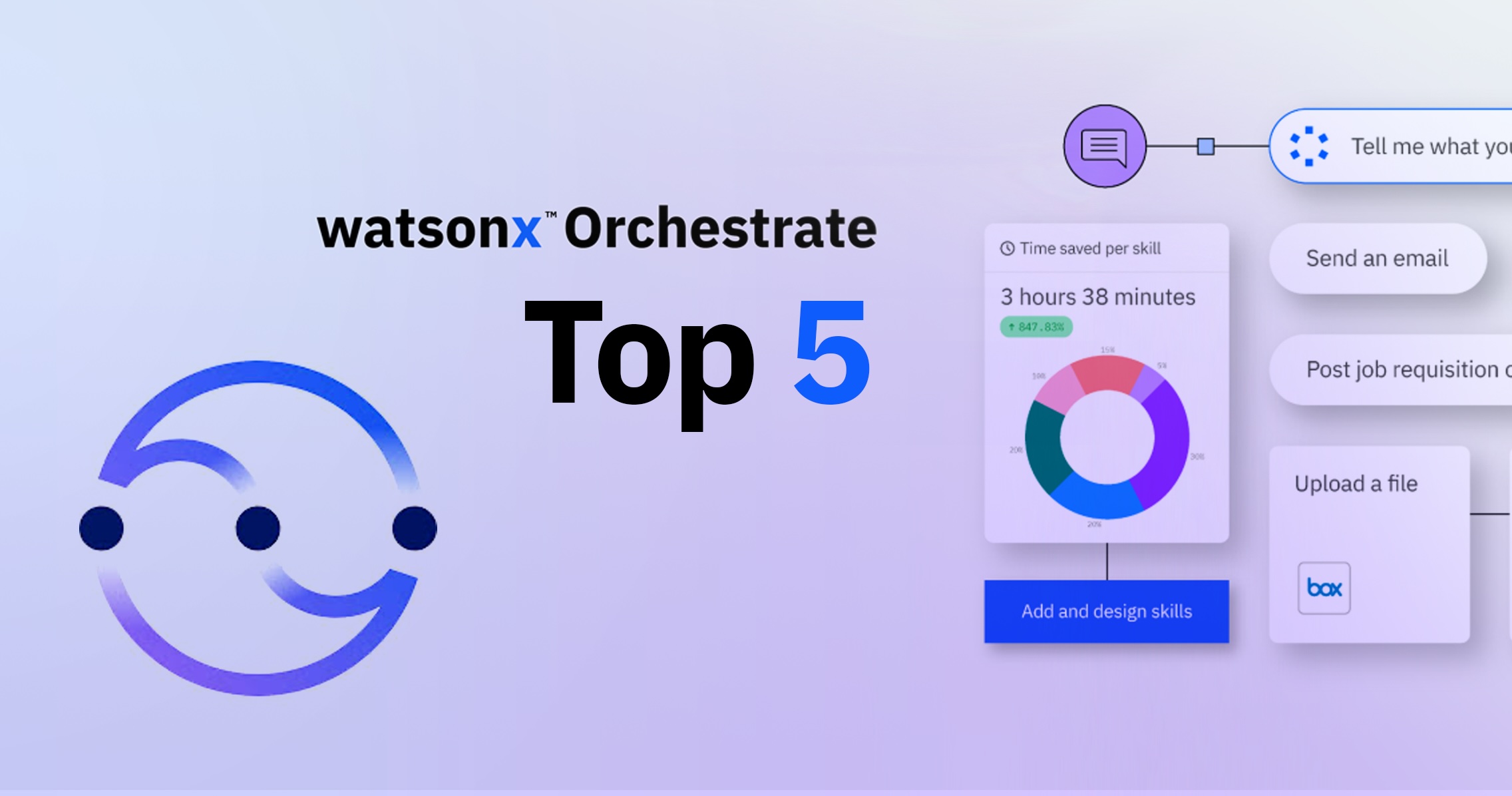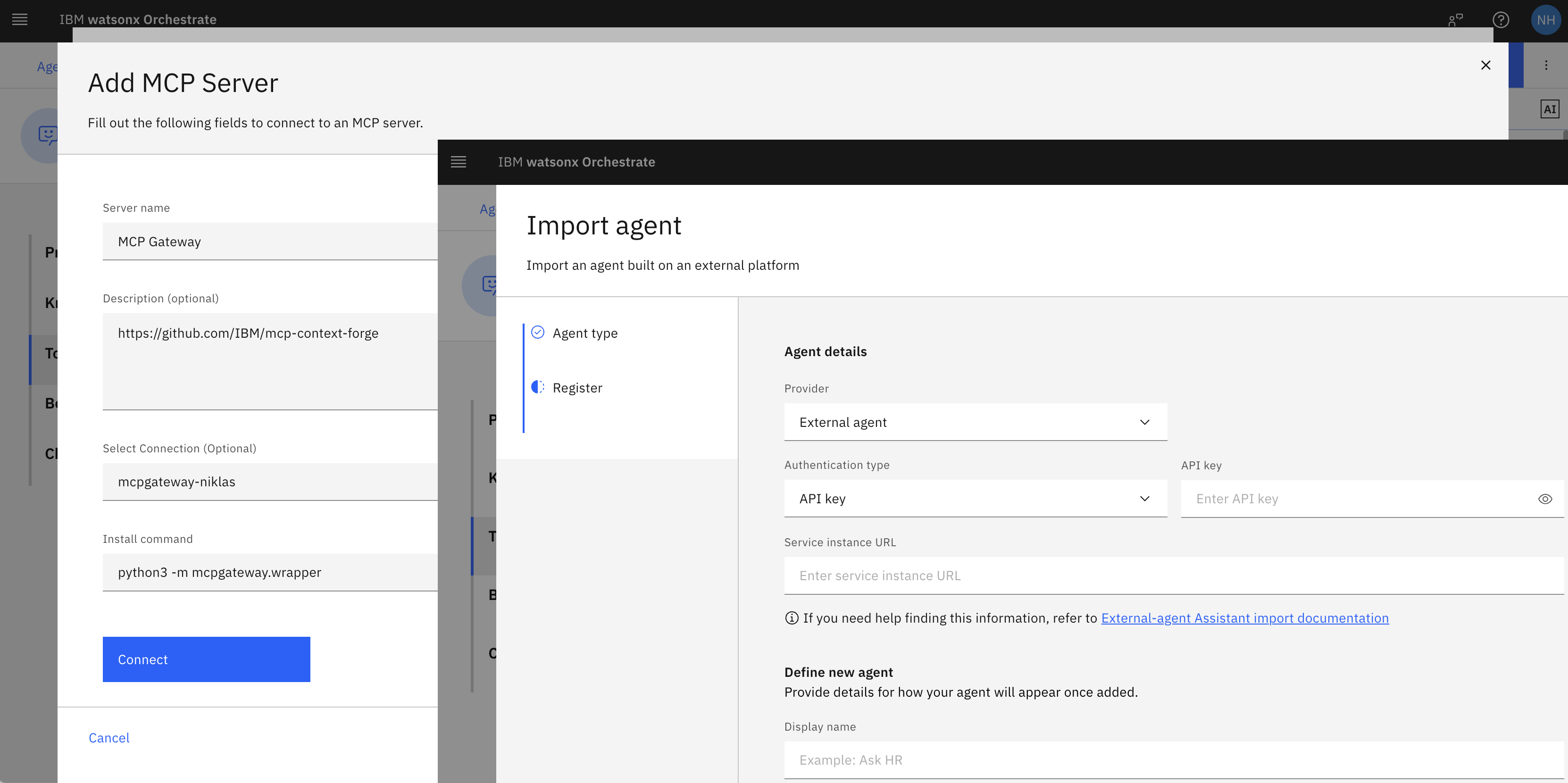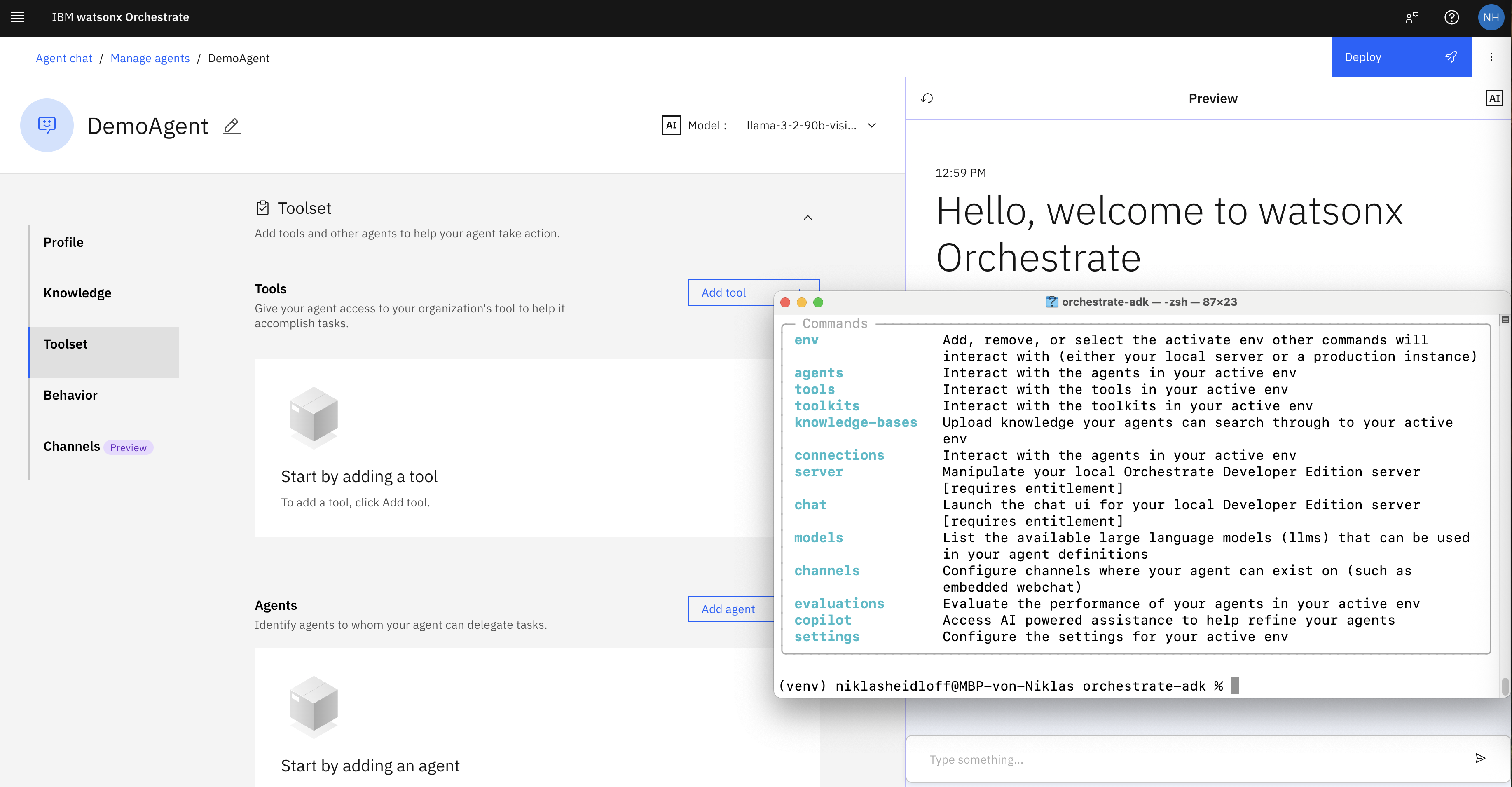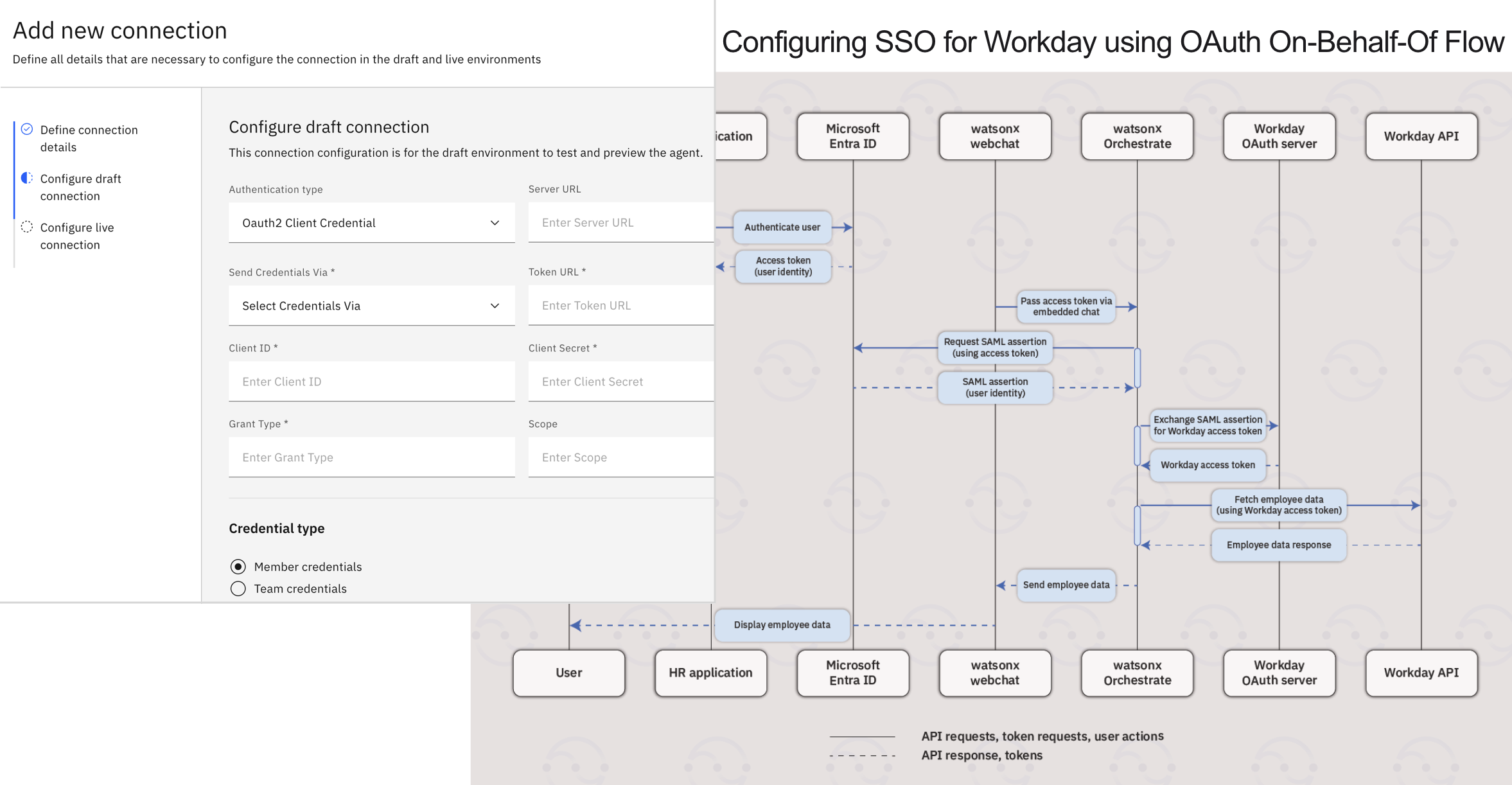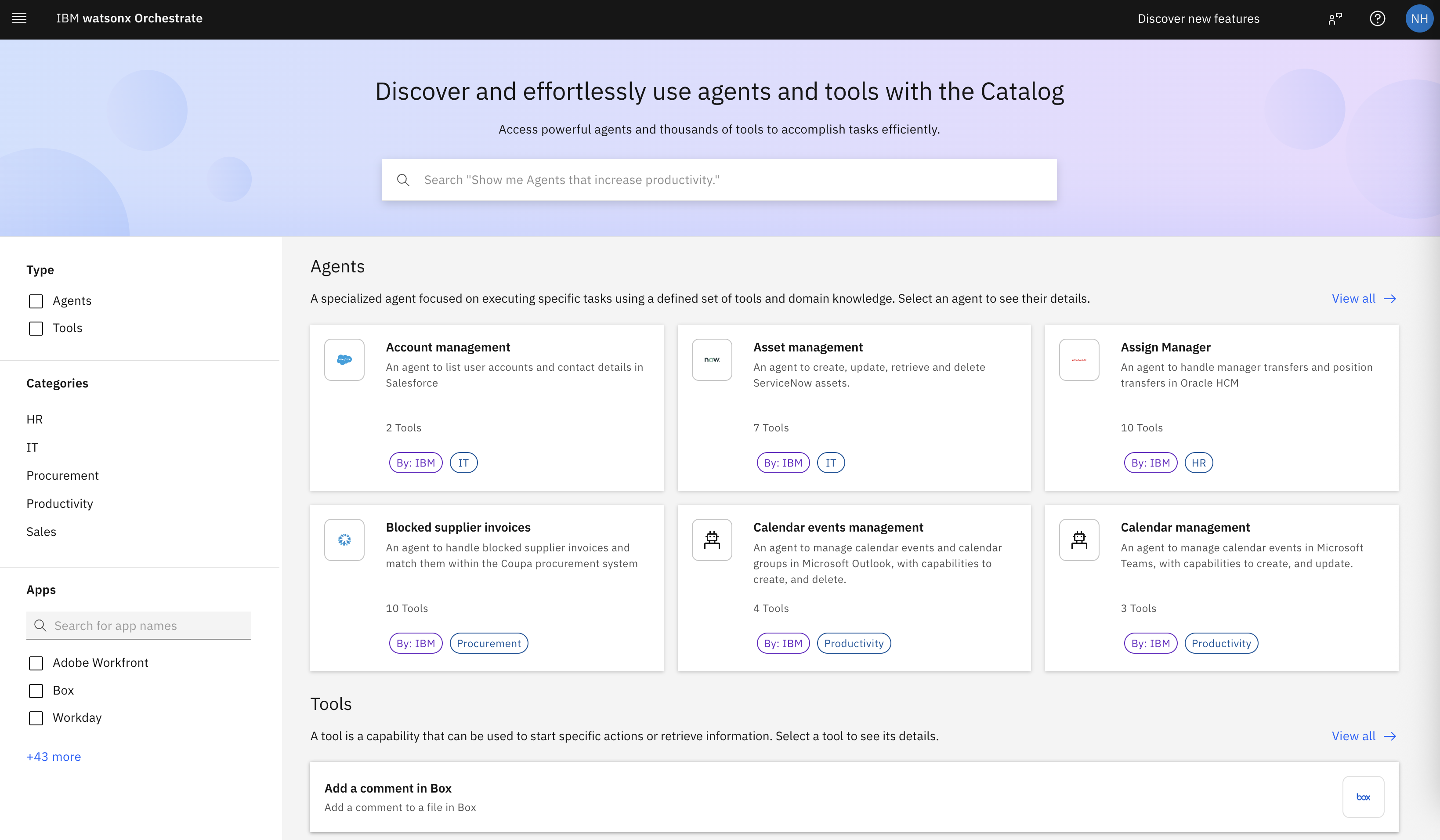Watsonx Orchestrate is IBM’s platform to build and run agentic systems, from structured flows to autonomous systems. You can start simple via the Orchestrate user interfaces, but as a developer you can also get full control by writing code. In this post I describe my top five reasons why you should use watsonx Orchestrate to build and run agentic applications.
Watsonx Orchestrates provides a lot of capabilities to automate and optimize business processes to make users more efficient. Too many to cover in one blog post. Below is my top five list of key capabilities which differentiate watsonx Orchestrate from other agentic frameworks.
- Openness
- Simplicity AND full Control
- All Types of agentic Apps
- Built-in Security
- Catalog of Agents and Tools
Openness
The agentic landscape is moving fast and multi agent systems are becoming real. New standards like MCP (Model Context Protocol) allow agent and tool interoperability. I could imagine that soon every company has an MCP server like companies have phone numbers, email contact information, digital assistants and APIs today.
Watsonx Orchestrates supports MCP and you can connect different types of external agents. Custom watsonx Orchestrate agents can orchestrate tasks between agents and tools.
The following two screenshots show how to integrate agents and tools in the user interface.
Simplicity AND full Control
There are many frameworks to build agentic systems. Some of them focus on simple experiences, others on maximal flexibility. Only few of them can do both. With watsonx Orchestrate you can start simple by using the user interfaces. Low-code developers and even line of business users can build agents.
While this works in certain scenarios, often there is the need to extend certain features programmatically. Black boxes and opinionated frameworks that do some magic are great if they work. If not, you get stuck. Watsonx Orchestrate provides different ways for developers to get full control if needed. There is an Application Development Kit, APIs and a CLI.
With watsonx Orchestrate you can start simple and get full dev control if necessary.
The following screenshot displays the user interface and the CLI.
All Types of agentic Apps
While there is a lot of hype around autonomous agents, as of today they often fail. For business-critical processes they are not reliable enough yet. Structured flows are more reliable, but less flexible. With watsonx Orchestrate different types of agentic applications can be built.
The screenshot shows the Flow Builder to define flows graphically. Alternatively, developers can also write flows via code.
Built-in Security
Agents can support humans by accessing systems and executing tasks on their behalf. This requires a secure architecture to handle and store tokens individual credentials. Additionally, watsonx Orchestrate provides the concept of permissions to define what tools are allowed to do.
The next image shows how OAuth can be configured to access an enterprise system with personal credentials stored in a credential vault.
Catalog of Agents and Tools
Watsonx Orchestrate comes with pre-built agents and tools to access enterprise systems. These assets can be leveraged as they come out of the box and modified for your specific needs.
The screenshot displays the catalog of agents and tools.
More
In addition to my top five benefits of watsonx Orchestrate, there are many more great features.
- Hybrid: watsonx Orchestrate can be run on multiple clouds and on-premises
- Multi agent applications can be built
- Human in the loop: Flows can include steps that require approvals by humans
- Retrieval Augmented Generation: Orchestrate comes with a vector database and creates embeddings automatically
- Observability: Systems like Langfuse and Jaeger can be integrated via OpenTelemetry
- Scalability: watsonx Orchestrate is part of the watsonx family, which is a proven end to end AI platform
- Evaluations: Agents can be evaluated; not only their final answers, but also tool invocations and flows
Next Steps
To find out more, check out the following resources:
Thanks to Daniel Frick for providing the header image of this post.

